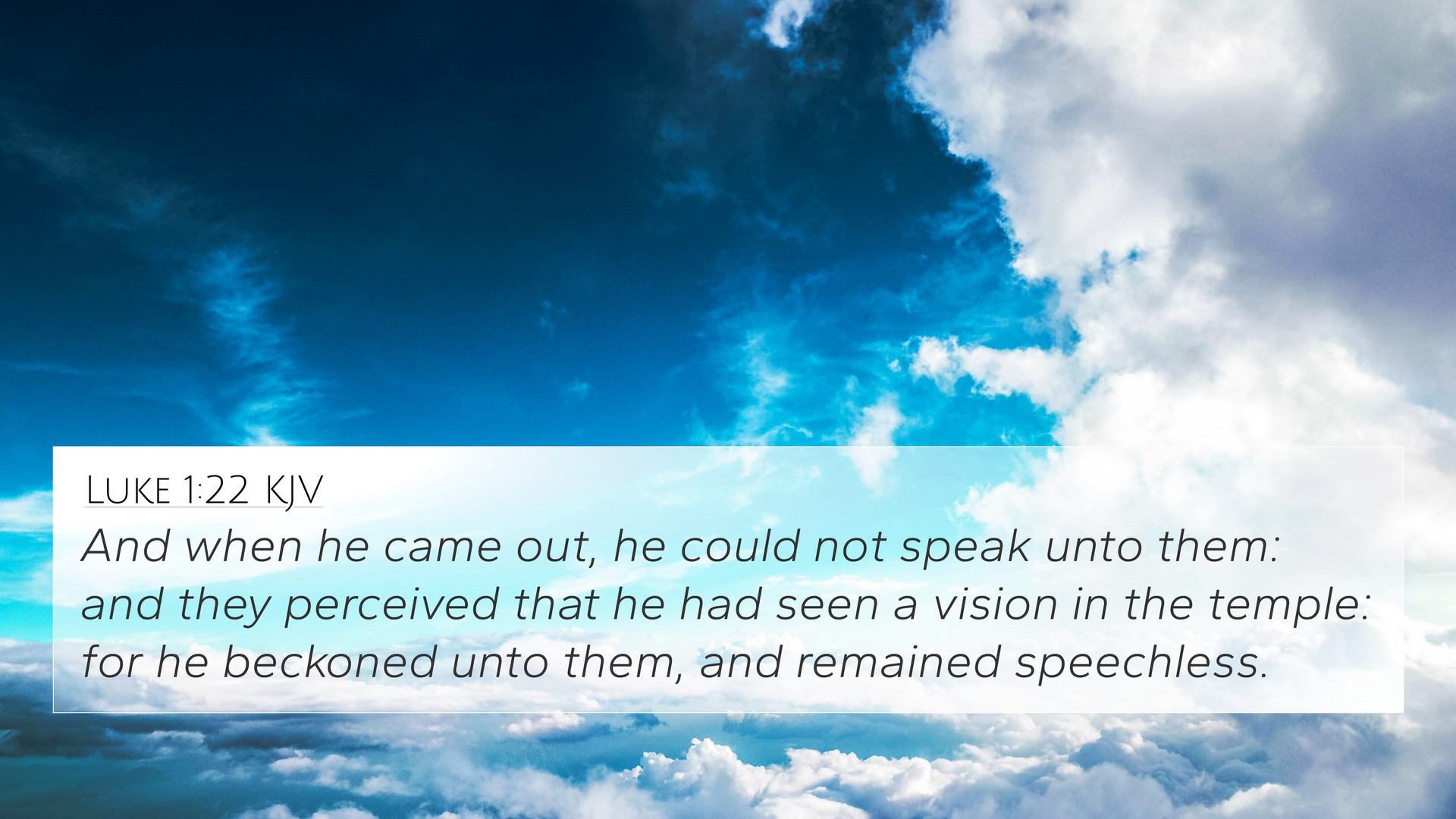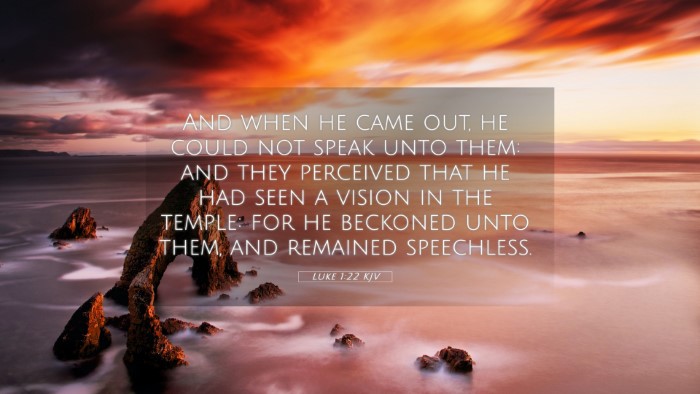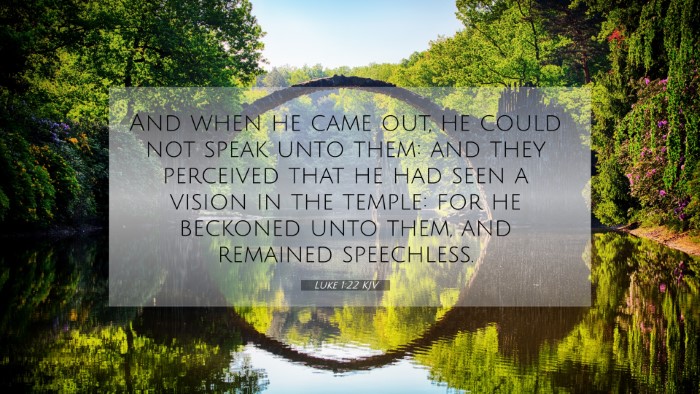Understanding Luke 1:22
Luke 1:22 states, "But when he came out, he could not speak to them: and they perceived that he had seen a vision in the temple: for he beckoned unto them, and remained speechless."
This verse occurs during the account of Zechariah, who was visited by the angel Gabriel while serving in the temple. As he was informed of the miraculous birth of his son, John the Baptist, Zechariah was rendered mute as a sign of God’s power and a result of his initial disbelief.
Commentary Insights
-
Matthew Henry:
Henry emphasizes the disbelief of Zechariah and how his muteness serves as a divine sign. The inability to communicate illustrates the seriousness of his doubt and God’s sovereignty. Zechariah's silence highlights his subsequent need to reflect on God’s plan.
-
Albert Barnes:
Barnes notes that Zechariah's speechlessness was both a punishment and a means of demonstrating the truth of the divine message. It portrays a significant shift in Zechariah's understanding from doubt to eventual faith, encapsulating a common biblical theme of God overcoming human limitations.
-
Adam Clarke:
Clarke explains that the inability to communicate emphasizes God's authority in the situation. Zechariah's gestures to the people signify his willingness to convey the heavenly message despite his silent condition, showcasing resilience in faith.
Bible Verse Cross-References
Luke 1:22 can be understood more fully through the following connections in Scripture:
- Isaiah 53:1: "Who has believed our message?" - This connects to the theme of faith and disbelief found in Zechariah’s initial reaction.
- Luke 1:20: "And now you will be silent and not able to speak until the day this happens..." - This is directly related, providing context to the consequence of Zechariah’s disbelief.
- Matthew 9:32-33: A mute man healed, showcasing the contrast between silence and the power of God to restore speech.
- Matthew 12:34: "For out of the abundance of the heart the mouth speaks." - Referring to the importance of what is in one’s heart at times of communication.
- 1 Samuel 3:15: The silence of Eli, drawing a parallel with divine revelation—a common theme across biblical narratives.
- Luke 1:63-64: "He asked for a writing tablet, and to everyone's astonishment, he wrote, 'His name is John.' Immediately his mouth was opened." - This follows the themes of faith and divine proclamation.
- Psalm 115:17: "It is not the dead who praise the Lord, those who go down to the place of silence;" - Relating silence with death, but here it serves a divine purpose.
Thematic Bible Verse Connections
Understanding Luke 1:22 can unveil deeper thematic elements in the Bible:
- Faith and Doubt: This verse illustrates the tension between believing in God’s promises and the doubt that can hinder our relationship with Him.
- Divine Communication: The narrative challenges readers to reflect on how God communicates through silence and signs.
- Human Limitations: Zechariah’s muteness symbolizes human frailty faced with divine capability.
- Signs and Miracles: This verse invites the reader to explore the significance of miraculous signs and their implications on faith.
Tools for Bible Cross-Referencing
To study connections between Bible verses such as Luke 1:22, consider using:
- Bible Concordance: A helpful tool for finding related verses and understanding their context.
- Bible Cross-Reference Guide: Utilized to explore deeper connections between texts.
- Cross-Referencing Bible Study Methods: Techniques to analyze scripture for thematic studies.
Conclusion
In conclusion, Luke 1:22 invites believers to reflect on themes of faith, divine authority, and the power of God's revelation. By looking at the verse through different biblical lenses and utilizing tools for scriptural cross-referencing, readers can gain a richer understanding of God's word and His ways of communicating with humanity.







